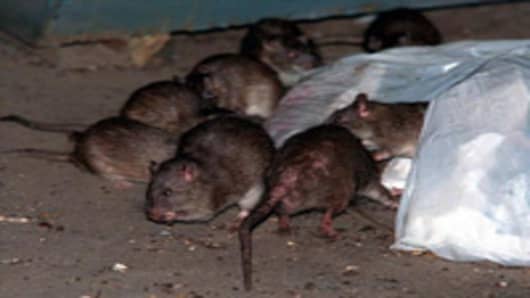New research from Cairo shows that rats become more belligerent when exposed to gasoline fumes and tailpipe pollution. If the same thing happens to humans, that might explain why the guy in the Escalade was waving his Smith & Wesson on the freeway in L.A. the other night, but it may also highlight the co-benefits of a low-carbon economy.
While all of us probably feel like trapped rats from time to time, a more relevant recent study, published in the British medical journal Lancet, reports that cutting carbon emissions could save human lives.
For example, using cleaner cars in London (like those now mandated by California law) would save 160 total person-years of life per million residents every year.
In Delhi, India, such a switch would save nearly 1,700 total person years of life per million people each year, largely because of reduced lung disease, heat stress and related heart problems.
As the focus in Copenhagen next week turns towards how to pay for cutting the carbon, it may be useful to be honest about the real cost of business as usual. These health studies certainly show that we’re already paying for the cost of burning fossil fuels, but not all of those costs are included in the price at the pump or on the electric meter.
Among those who might benefit from exposing those hidden costs is the National Railway Equipment Company. National has begun to sell their “N-ViroMotive” locomotives that are to railroads what the Prius is to highways. Using sophisticated generator technology and controls, these green engines cut pollution up to 90 percent and fuel use by as much as 70 percent. Put another way, business-as-usual costs shippers 70 percent more in fuel bills and costs taxpayers 90 percent more in pollution-related health and climate change costs.
An even bigger winner may be General Atomics, a defense contractor that is demonstrating an electric maglev freight carrier that could soon replace trains in the busy ports of Los Angeles and Long Beach—through which 40 percent of all goods imported into the US pass—speeding shipping containers out of ports, while reducing traffic congestion and air pollution on local highways. Transrapid, in partnership with Siemens and Thyssen Krupp, is doing similar cargo moving demos in Germany and China.
When President Obama and the other climate conference participants in Copenhagen next week ask “how do we pay for decarbonizing the global economy”, the better question should be “how can we afford to keep paying the true fossil-fueled price of continued pollution?”
So here’s hoping they get busy and cut the carbon, reduce the harmful pollution, save money—and let both people and rats breathe easier.
______________________________
Terry Tamminen, former Secretary of the California Environmental Protection Agency, is a partner at Pegasus Sustainable Century Merchant Bank and the Cullman Senior Fellow at the New America Foundation. (Cracking The Carbon Code is a registered trademark of Terry Tamminen).



